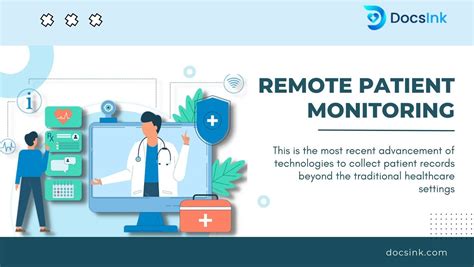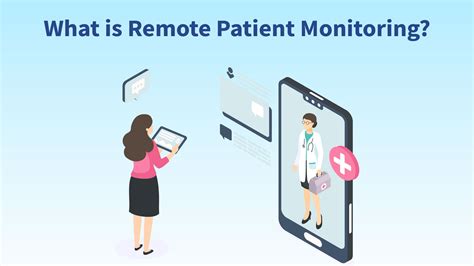Intro
Explore the growing field of remote patient monitoring jobs, where technology meets healthcare. Discover career opportunities in RPM, including telehealth nursing, remote monitoring technician, and healthcare IT roles. Learn about the benefits, requirements, and future prospects of these in-demand jobs, revolutionizing patient care and healthcare management.
The healthcare industry is undergoing a significant transformation, driven by the increasing demand for remote patient monitoring (RPM) services. As the population ages and chronic diseases become more prevalent, the need for innovative solutions that enable healthcare providers to monitor patients outside of traditional clinical settings is growing exponentially. This shift has created a wide range of career opportunities in the field of remote patient monitoring, making it an exciting time for professionals looking to make a meaningful impact in the healthcare industry.
The RPM market is expected to experience significant growth in the coming years, with estimates suggesting that it will reach $31.3 billion by 2025, up from $13.4 billion in 2020. This growth is driven by the increasing adoption of digital technologies, the need for cost-effective solutions, and the growing demand for patient-centered care. As a result, healthcare organizations, medical device manufacturers, and technology companies are all investing heavily in RPM solutions, creating a wealth of job opportunities for professionals with expertise in this area.
One of the primary drivers of the RPM market is the growing demand for telehealth services. Telehealth, which involves the use of digital technologies to deliver healthcare services remotely, has become increasingly popular in recent years, particularly among patients with chronic conditions. As the demand for telehealth services continues to grow, so too does the need for professionals with expertise in remote patient monitoring.

Types of Remote Patient Monitoring Jobs
The RPM market encompasses a wide range of job opportunities, from clinical and technical roles to business development and marketing positions. Some of the most in-demand RPM jobs include:
Clinical Roles
- Remote Patient Monitoring Nurse: Responsible for monitoring patients remotely, responding to alerts, and providing guidance on self-care and disease management.
- Telehealth Physician: Provides medical care to patients remotely, using digital technologies to diagnose and treat conditions.
- Care Coordinator: Coordinates patient care, ensuring that patients receive the necessary support and services to manage their conditions effectively.
Technical Roles
- Biomedical Engineer: Designs and develops medical devices and equipment used in RPM, such as wearable sensors and mobile apps.
- Data Analyst: Analyzes data from RPM systems, identifying trends and insights that inform clinical decision-making.
- IT Project Manager: Oversees the implementation and maintenance of RPM systems, ensuring that they are secure, efficient, and effective.
Business Development and Marketing Roles
- Business Development Manager: Identifies new business opportunities in the RPM market, developing strategies to drive growth and revenue.
- Marketing Manager: Develops and implements marketing campaigns to promote RPM solutions, highlighting their benefits and value proposition.
- Sales Representative: Sells RPM solutions to healthcare organizations, medical device manufacturers, and other stakeholders.

Skills and Qualifications
To succeed in an RPM job, you'll need a combination of clinical, technical, and business skills. Some of the key skills and qualifications required for RPM roles include:
- Clinical expertise: A strong understanding of patient care, disease management, and clinical decision-making.
- Technical skills: Proficiency in digital technologies, such as mobile apps, wearable sensors, and data analytics platforms.
- Communication skills: Excellent communication and interpersonal skills, with the ability to work effectively with patients, clinicians, and other stakeholders.
- Business acumen: A solid understanding of the business side of healthcare, including market trends, reimbursement models, and regulatory requirements.
Education and Training
While a degree in a healthcare-related field is often preferred, it's not always required. Many RPM professionals have backgrounds in nursing, medicine, biomedical engineering, or health informatics. Additionally, many employers provide on-the-job training and professional development opportunities to help employees build their skills and expertise.

Salary Ranges
Salaries for RPM jobs vary widely, depending on factors such as location, employer, level of experience, and specific job duties. However, here are some approximate salary ranges for RPM roles:
- Remote Patient Monitoring Nurse: $60,000 - $90,000 per year
- Telehealth Physician: $150,000 - $250,000 per year
- Biomedical Engineer: $80,000 - $120,000 per year
- Data Analyst: $50,000 - $80,000 per year
- Business Development Manager: $80,000 - $120,000 per year

Conclusion
The remote patient monitoring market is a rapidly growing field, offering a wide range of career opportunities for professionals with expertise in clinical, technical, and business areas. Whether you're a seasoned healthcare professional or just starting your career, there's never been a better time to explore the many possibilities in RPM. With its potential to improve patient outcomes, reduce healthcare costs, and enhance the overall quality of care, RPM is an exciting and rewarding field that's sure to continue growing in the years to come.
What is remote patient monitoring?
+Remote patient monitoring (RPM) is the use of digital technologies to monitor patients outside of traditional clinical settings. RPM enables healthcare providers to track patients' vital signs, symptoms, and health status in real-time, using mobile apps, wearable sensors, and other devices.
What are the benefits of remote patient monitoring?
+RPM offers several benefits, including improved patient outcomes, reduced healthcare costs, and enhanced patient engagement. RPM also enables healthcare providers to respond quickly to changes in patients' conditions, reducing the risk of complications and hospitalizations.
What types of jobs are available in remote patient monitoring?
+RPM jobs include clinical roles, such as remote patient monitoring nurses and telehealth physicians, as well as technical roles, such as biomedical engineers and data analysts. Business development and marketing roles are also available, including business development managers and marketing managers.
